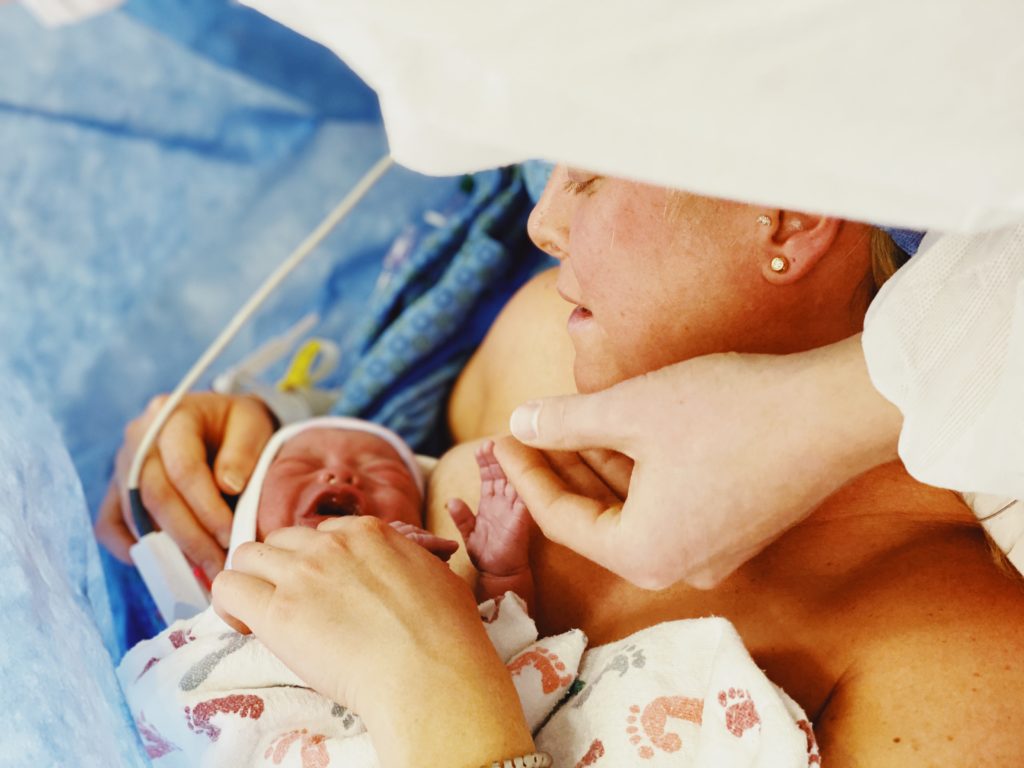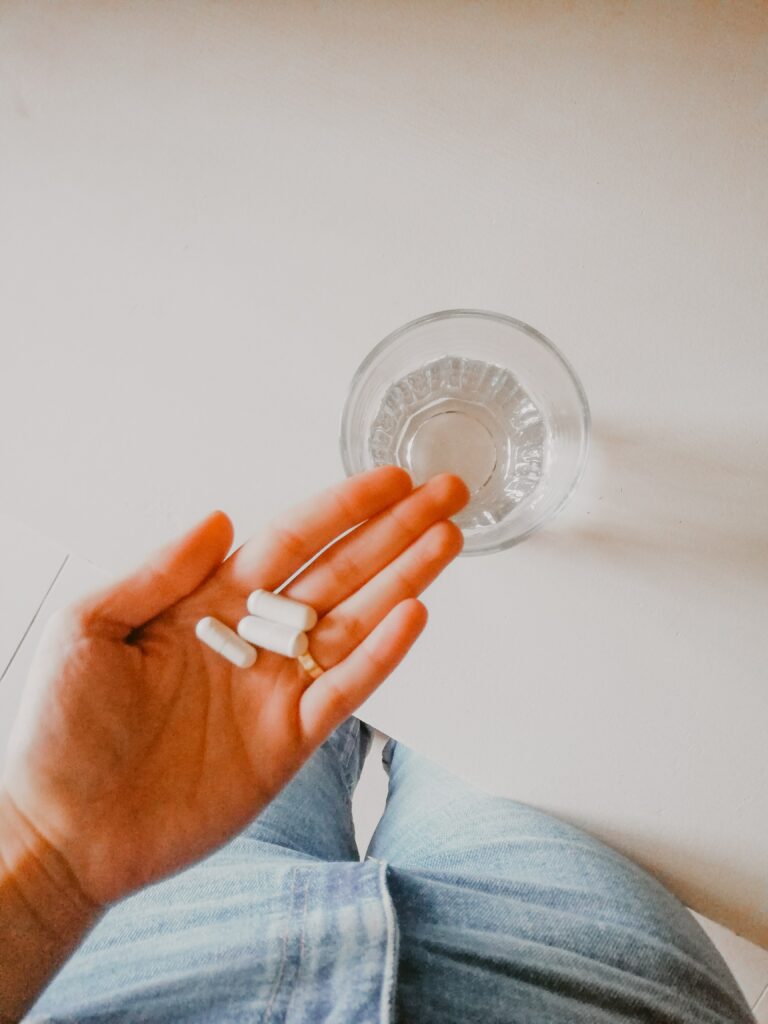Trying to get pregnant is both exhilarating and stressful. I get it. Sometimes, despite eating nutritious foods and living a healthy lifestyle, pieces of a woman’s fertility journey are out of her control. Furthermore, each phase of the fertility process can be confusing—from understanding the timing and length of your menstrual cycle—to when you can actually get pregnant, it’s not as straightforward as we’re lead to believe. Learning the ins and outs of getting pregnant is the first step in your adventure to motherhood. In today’s article, we’re diving into a baseline fertility checklist. These are the steps, dietary guidelines, and habits to implement before trying to get pregnant. My goal is for you to improve your chances of conceiving with this guide.

accidental pregnancy vs. a miracle baby
For some, falling pregnant is easy (in fact, accidental). We all know a woman who wasn’t trying but fell pregnant on a whim. On the other end of the spectrum, it’s an entirely different process. For couples struggling to conceive, it can be a long and distressing journey. Amid fertility challenges, months feel long and emotions run high. As a woman with PCOS, I resonate with this. Deeply. Fortunately, there is light at the end of the tunnel. There are many things you can do to improve your chances of getting pregnant. Following this fertility checklist can turn a stressful situation into a less overwhelming process. Stick with the plan, but go with the flow—a fertility mantra to hold close.
How does conception occur?
Let’s start with the basics. What steps do you need to take to prepare for conception and a healthy pregnancy? And what should you understand about how your body—and your partner’s body—work in order to increase the likelihood of conception? For conception to occur, you need four components: sperm, an egg, fertilization (when sperm meets egg), and a healthy environment for the egg to implant and grow. While this seems simple, fertility can be anything but. It’s complex and things don’t often occur as expected. And that’s okay. However, working through this fertility checklist can help you understand where there may be a disconnect. The hope is to detect issues now that would prevent you from conceiving later.

Honoring your fertility journey
Fertility journeys run the gamut: some are long, short, heartbreaking, joyful, painful, trying, or triumphant. It’s a winding path of hope and patience. For those who practice manifestation, fertility often morphs into a vision board of maternity clothes, nursery items, deep meditations, and a string of mantras to persevere. Regardless, the journey is a relentless dream—an optimistic reality. And although the experience can be immensely overwhelming and anxiety-inducing, it’s a road worth every twist and turn. Honor the unfolding and you may be pleasantly surprised by the outcome (I believe this for you!).
MY FERTILITY JOURNEY
If I’ve learned anything in the past couple of years, it’s that sharing your fertility journey is profoundly worthwhile. For my husband and me, our path to getting pregnant wasn’t a walk in the park. For most of my late-teens and college years, I didn’t take care of my body. I over-exercised. I under-ate. Fast-forward to my late-20s: I eventually made peace with my body, started nourishing it with balanced foods, and cut back on strenuous exercise. Regardless, I knew something was wrong. My menstrual cycle had always been irregular. On top of that, I wasn’t treating my body with the support, love, and respect it deserved. It all came to a head when I was 24. During an annual pap, I was diagnosed with a common hormone imbalance: PCOS.

HOW WE GOT PREGNANT with PCOS
Knowing we hoped to get pregnant, I immediately took action. I sought guidance from a functional medicine doctor and holistic nutritionist. I started routine acupuncture. I left a draining, uninspiring job. I put my heart and soul into Wellness with Edie. I said goodbye to unnecessary stress. I started nourishing my body with healthy fats, energizing carbohydrates, and satiating protein. From food to lifestyle choices, I began healing and repairing my relationship with my body. Its intuitive needs became my focal point.
Despite these changes, I wasn’t ovulating regularly. I needed to take medicine in order to get pregnant. With the support of my OB/GYN, we decided on Clomid. After just two rounds, we found out we were expecting. The joy, relief, and excitement were palpable.

THE LATEST RESEARCH ON FERTILITY AND AGE
My fertility journey aside, you may be thinking—but is it too late for me? Good news: women are giving birth later. Fertility declines as we age, but it’s not nearly as dramatic as most of us think. In all reality, it’s more of a dip—not a nosedive—at age 35. A reassuring study (cited in these guidelines) found that women ages 30-34 have an 86% chance of getting pregnant within one year of trying to conceive. And they have a 94% chance of conceiving after two years. For women ages 35-39, there’s an 82% chance of conceiving after one year, and a 90% chance of conceiving after two years. These are far from dismal percentages!
Time your intercourse
Another way to increase your percentage of getting pregnant? Time your intercourse before ovulation. In other words, you want to be having consistent sex as soon as your period ends (the start of your follicular phase). In fact, this study found conception only occurred when intercourse took place during a six-day period that ended on the estimated day of ovulation. In other words, knowing when you are ovulating can help you plan ahead of time. Women are born with about 1 million eggs, yet only release 300 to 400 during ovulation throughout the span of their lifetime. When trying to get pregnant, timing intercourse is crucial. Inevitably, this increases the likelihood of millions of sperm meeting one single egg.

How to naturally boost your fertility
Before we dive into a straightforward fertility checklist, below are five ways to naturally boost your fertility.
1. Don’t beat yourself up for waiting
Your life, your timeline. Trust the unfolding. Stressing about your age, wallowing in should-haves, and berating yourself for not trying to get pregnant sooner will only hinder—not help—your chances of conceiving. This negative attitude will leave you feeling guilty, frustrated, and emotionally drained. There is no shame in living a life filled with memories, experiences, and learning opportunities! Looking at things from a different lens, that’s a fertile life. Fertility is more than conception and reproduction. Fertility is about being full, creative, productive, and vibrant.
2. HAVE AN HONEST CONVO WITH YOUR DOCTOR
As soon as you even start thinking about trying to conceive, talk to your provider. Let them know you’re planning to have a family. Together, review your menstrual cycle. Ask to have labs done to rule out conditions like hypothyroidism, amenorrhea, and PCOS. Blood tests can also rule out nutrient deficiencies (which can impair fertility). In essence, your doctor can help you take a proactive approach to getting your body ready. Set yourself up for success!
3. Balance your blood sugar
When it comes to nutrition, you want to make sure you’re eating enough, consuming a variety of high-quality ingredients, and keeping blood sugar balanced. Eating enough (which most women aren’t doing!) ensures your body has proper fuel for the very energy-intense process of developing a mature egg, ovulating, conceiving, and carrying a baby to term. Secondly, variety ensures your body is getting in the vitamins and minerals it needs for optimal reproductive health. Include plenty of antioxidant-rich and anti-inflammatory foods. Lastly, you want to keep your blood sugar as stable as possible. This decreases inflammation in the body, supports optimal sleep, and so much more.
4. REPLENISH NUTRIENTS LOST FROM BIRTH CONTROL
There’s no denying that birth control pills can deplete vitamins and minerals. Eating a variety of foods—as well as taking a multivitamin / prenatal—can help replace valuable nutrients. This is another reason why you’ll want to have your nutrient levels checked before trying to conceive. You might need a higher dose of some vitamins and minerals, like B vitamins. Again, a blood panel will help with this!
5. PRIORITIZE SLEEP AND STRESS MANAGEMENT
We’re often so focused on food and fitness that we totally skip over two incredibly important roles in our wellbeing: sleep and stress. Not only do both of these impact reproductive and overall wellness, but they also support nutrition and exercise. After all, it’s hard to eat well and be active when you’re tired and stressed out. Plus, stress and sleep quickly throw blood sugar out of whack. Here are some quick tips to support restorative rest and stress relief: get outside and disconnect from your digital life—every day (time in nature is rejuvenating and healing), read fiction books instead of doom scrolling on social media, and spend time being creative in the kitchen. If it calls to you, start a daily meditation practice.

Fertility checklist
Without further ado, below is 5-step fertility checklist to improve your odds of conceiving—in an efficient and (hopefully!) timely manner.
1. Start taking a prenatal
First things first. If you decide to start actively trying, pretend you’re already pregnant. And the first step in that process? Take a prenatal vitamin. A baby demands tremendous nutrition from the moment that sperm meets egg. And since we don’t find out that we are pregnant until 2-3 weeks after this happens, not taking a prenatal vitamin from the start can impact baby’s health before you even know that baby exists! In addition, a high-quality prenatal can help you start to address nutrient deficiencies to help support fertility, manage morning sickness, and contribute to a healthier pregnancy for both you and baby. However, not all prenatals are created equal. A quick test: if your prenatal only requires two pills per day, it probably isn’t cutting it. My go-to prenatal is from Pure Synergy.

2. Limit Toxin Exposure
Another step in acting like you’re already pregnant? Remove as many toxins from your home as possible. Yes, that includes your deodorant. We will always be exposed to a certain amount of toxic substances. Certain things like air pollution are practically unavoidable. However, controlling the things you can control will greatly benefit you and baby—from preconception to postpartum and beyond. Toxins can include endocrine disruptors in our cleaning and personal care products, but they also include alcohol and caffeine. While these are present in many of our lives, they require extra work for our bodies to eliminate and only work against you when it comes to your health and ability to support a growing baby.

3. Determine your fertile window
To support the chances of sperm meeting egg, it’s necessary to know when you are fertile. Knowing your fertile window—or the period of time around ovulation—gives you the information you need to time intercourse correctly. There are several options to track ovulation: LH tests (ovulation predictor kits), cervical mucus monitoring, and basal body temperature (BBT) monitoring. Just as your cervical fluid changes throughout your cycle, so does your basal body temperature. Take your BBT as soon as you wake up in the morning. It dips a bit just before your ovary releases an egg. Then 24 hours after the egg’s release, it rises again and stays up for several days. You can leave a thermometer by your bed to take your temperature first thing (and remember to log it in your phone).

4. Rule out nutrient deficiencies
Low levels of vitamin D, thyroid issues, elevated estrogen, etc. can hinder your ability to conceive. As part of your fertility checklist, rule out any nutritient deficiencies with your healthcare provider, OB/GYN, or functional medicine doctor. You may need to alter your diet or supplement regime! Getting bloodwork done, proactively, is key. Few studies have shown that low B complex, vitamin D, iron, iodine and magnesium are related to difficult conception in women. In addition to altering your supplements, ensure you’re eating a well-rounded, nutrient-dense diet. And most importantly, make sure you’re eating enough to initiate ovulation.

5. Get his swimmers checked
With the fertile window, healthy ovulation, and your nutrition covered, it’s important to understand what’s going on with your partner’s sperm. There are two main aspects of sperm that matter most: sperm count and sperm motility, meaning are there enough sperm in ejaculate and they can get to where they need to be (the egg). While some doctors may test sperm, it is often a later step in the infertility process. There are many at-home sperm tests on the market that test sperm count but only a few that test count and motility, so look for a kit that measures both.
NExt Steps: Additional testing
If you’ve checked off these five steps without a positive pregnancy test in six months, reach out to your provider. Share your fertility journey. Your doctor can test you for less common causes of infertility—like blocked fallopian tubes, genetic factors, or structural abnormalities within the uterus. Keep in mind that this list aims to empower you to have educated and productive conversations with your provider. Because the more you know about your fertility, the more effectively you can use your time with a doctor (and your money!) to help you reach your goals faster.
This article is for informational purposes only. It is not, nor is it intended to be, a substitute for professional medical advice, diagnosis, or treatment and we recommend that you always consult with your healthcare provider.



Leave a Reply